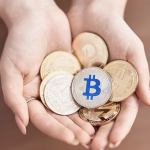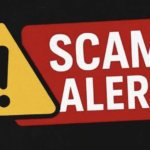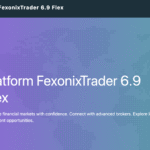
The Dark Side of Cryptocurrency: Uncovering Token Scams and How to Spot Them
Cryptocurrency has revolutionized the financial world by introducing decentralized, transparent, and borderless transactions. However, alongside the promise of these digital assets comes a darker reality: the prevalence of token scams. Among the most notorious of these are “rug pull” scams, which have cost investors millions of dollars. This article will uncover the mechanics of token scams, explain how to spot them, and provide guidance on how to report token scams effectively.
Understanding Token Scams
What Are Token Scams?
Token scams are fraudulent schemes involving the creation and promotion of new cryptocurrencies or tokens with the intent to deceive investors and steal their funds. These scams often lure investors with promises of high returns, innovative technology, and endorsements from celebrities or influential figures. Once enough money is collected, the scam orchestrators disappear, leaving investors with worthless tokens.
The Rise of Rug Pull Scams
One of the most common and devastating forms of token scams is the “rug pull.” In a rug pull scam, developers create a new cryptocurrency token and promote it heavily to attract investors. They might use deceptive marketing tactics, fake partnerships, and manipulated social media hype to generate interest. Once the token’s value has been artificially inflated and enough investors have bought in, the developers abruptly withdraw all liquidity from the token’s market, effectively pulling the rug out from under investors and causing the token’s value to plummet to zero.
How Token Scams Work
Step-by-Step Breakdown of a Rug Pull Scam
- Creation and Launch: Scammers create a new token, often on popular platforms like Ethereum or Binance Smart Chain. They design the token to look legitimate, with a professional website, whitepaper, and roadmap.
- Marketing and Hype: The token is aggressively marketed through social media, forums, and influencer endorsements. Scammers may pay for fake reviews and testimonials to create an illusion of legitimacy and excitement.
- Initial Investment Phase: Investors are enticed to buy the token during an initial coin offering (ICO) or a decentralized exchange (DEX) listing. The token’s price is often artificially inflated through market manipulation.
- Liquidity Withdrawal: Once a significant amount of money has been invested, the scammers withdraw all liquidity from the token’s market. This is typically done by selling their large holdings of the token, crashing its price.
- Exit and Disappearance: The scammers disappear with the investors’ funds, leaving behind a worthless token and no means of recovery.
Spotting Token Scams: Red Flags to Watch For
Unrealistic Promises
Be wary of tokens that promise guaranteed high returns with little or no risk. If something sounds too good to be true, it probably is. Legitimate investments always carry some level of risk, and no one can guarantee consistent, high profits.
Lack of Transparency
Legitimate cryptocurrency projects are transparent about their team, technology, and business model. If the developers’ identities are hidden, or if there is limited information about the project’s goals and technical details, proceed with caution. Anonymous teams can disappear easily without accountability.
No Verifiable Audit
Reputable projects often undergo security audits conducted by third-party firms to ensure their smart contracts are safe and free from vulnerabilities. If a project lacks a verifiable audit or refuses to provide audit reports, this is a significant red flag.
Inflated Marketing and Hype
Excessive hype and aggressive marketing tactics are common in token scams. Look out for projects that rely heavily on social media influencers, celebrities, or paid promotions without substantial technical or business backing.
Sudden Changes in Liquidity
Monitor the liquidity of the token on decentralized exchanges. Sudden large withdrawals or transfers of liquidity can indicate a potential rug pull in progress. Use tools like Etherscan or BscScan to track token transactions and monitor any suspicious activity.
How to Protect Yourself from Token Scams
Do Your Own Research (DYOR)
Before investing in any token, conduct thorough research. Read the whitepaper, understand the project’s goals, and verify the identities of the team members. Look for community feedback and reviews from reputable sources.
Use Reputable Exchanges
Invest in tokens listed on reputable and well-established cryptocurrency exchanges. These platforms often have stricter listing requirements and conduct their own due diligence on projects.
Verify Smart Contracts
If you have technical expertise, review the token’s smart contract code for any hidden vulnerabilities or malicious functions. Alternatively, rely on projects that have undergone third-party security audits.
Diversify Your Investments
Avoid putting all your funds into a single token. Diversifying your investment portfolio can help mitigate risks and reduce the impact of potential losses from scams.
Reporting Token Scams
Why Reporting is Crucial
Reporting token scams is essential to protect other investors and hold scammers accountable. Regulatory authorities, law enforcement agencies, and cryptocurrency exchanges rely on reports to investigate and take action against fraudulent activities.
How to Report Token Scams
- Contact Regulatory Authorities: Report the scam to financial regulatory authorities in your country. Agencies such as the U.S. Securities and Exchange Commission (SEC), the Financial Conduct Authority (FCA) in the UK, or the Australian Securities and Investments Commission (ASIC) can investigate and take legal action against scammers.
- File a Complaint with Blockchain Analysis Firm: Provide detailed information about the scam to your Blockchain Forensic firm, they will provide you with necessary assistance needed in reporting and if there’s any chance of recovery.
- Inform Cryptocurrency Exchanges: If the token was listed on a cryptocurrency exchange, report the scam to the exchange. Exchanges can delist fraudulent tokens and assist in freezing assets if possible.
- Use Online Reporting Platforms: Several online platforms and communities, such as the Better Business Bureau (BBB) and cryptocurrency forums, allow you to report scams and warn other investors.
- Spread Awareness on Social Media: Share your experience and details of the scam on social media platforms and cryptocurrency forums. Raising awareness can help prevent others from falling victim to the same scam.
Conclusion
The world of cryptocurrency offers incredible opportunities, but it also comes with significant risks, including the threat of token scams. By understanding how these scams operate, recognizing the red flags, and taking proactive measures to protect yourself, you can navigate the crypto landscape more safely. If you do fall victim to a token scam, reporting the incident promptly is crucial to help authorities take action and prevent further harm to the community. With vigilance and informed decision-making, you can avoid the pitfalls of the dark side of cryptocurrency and invest with confidence.






